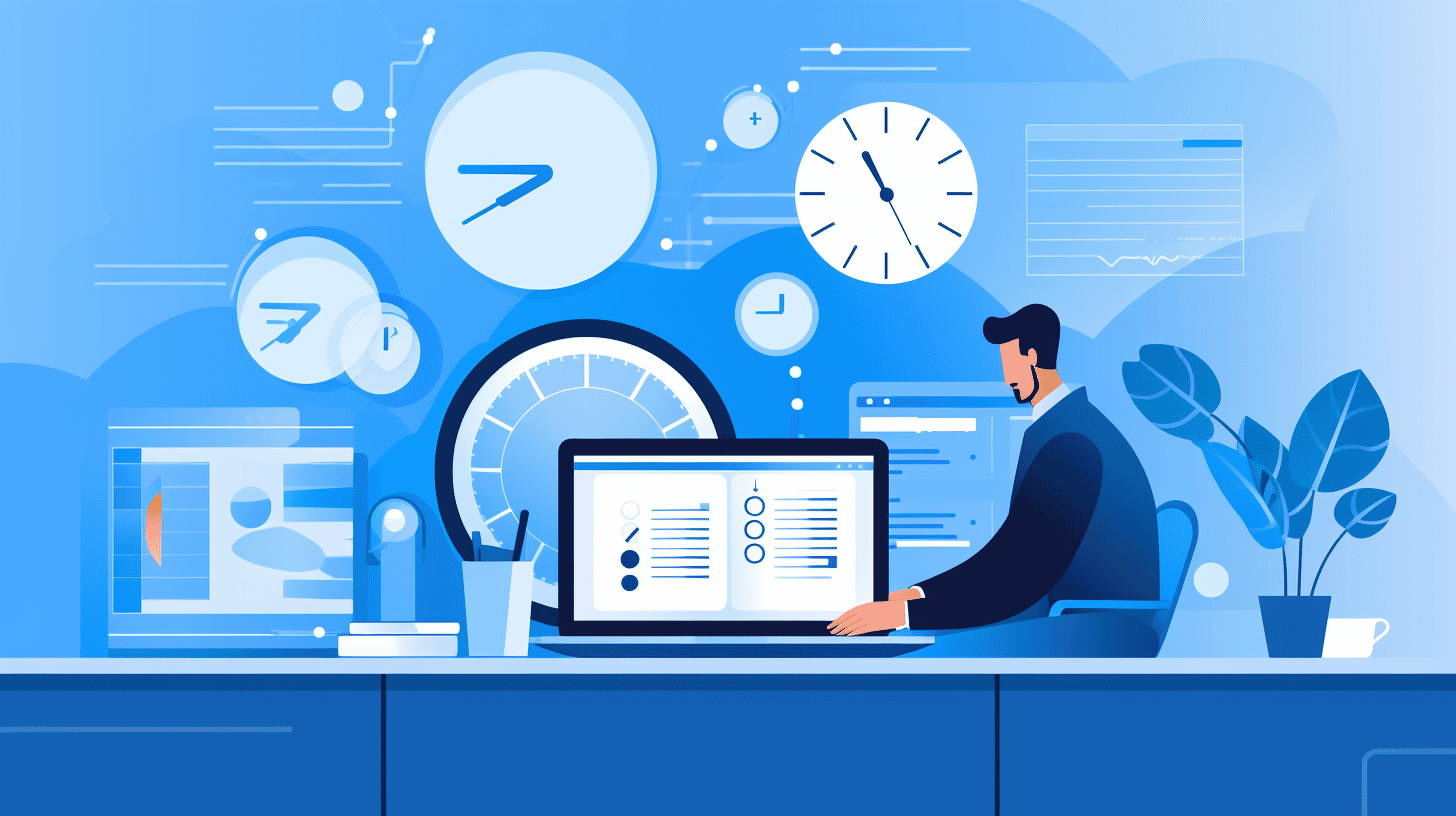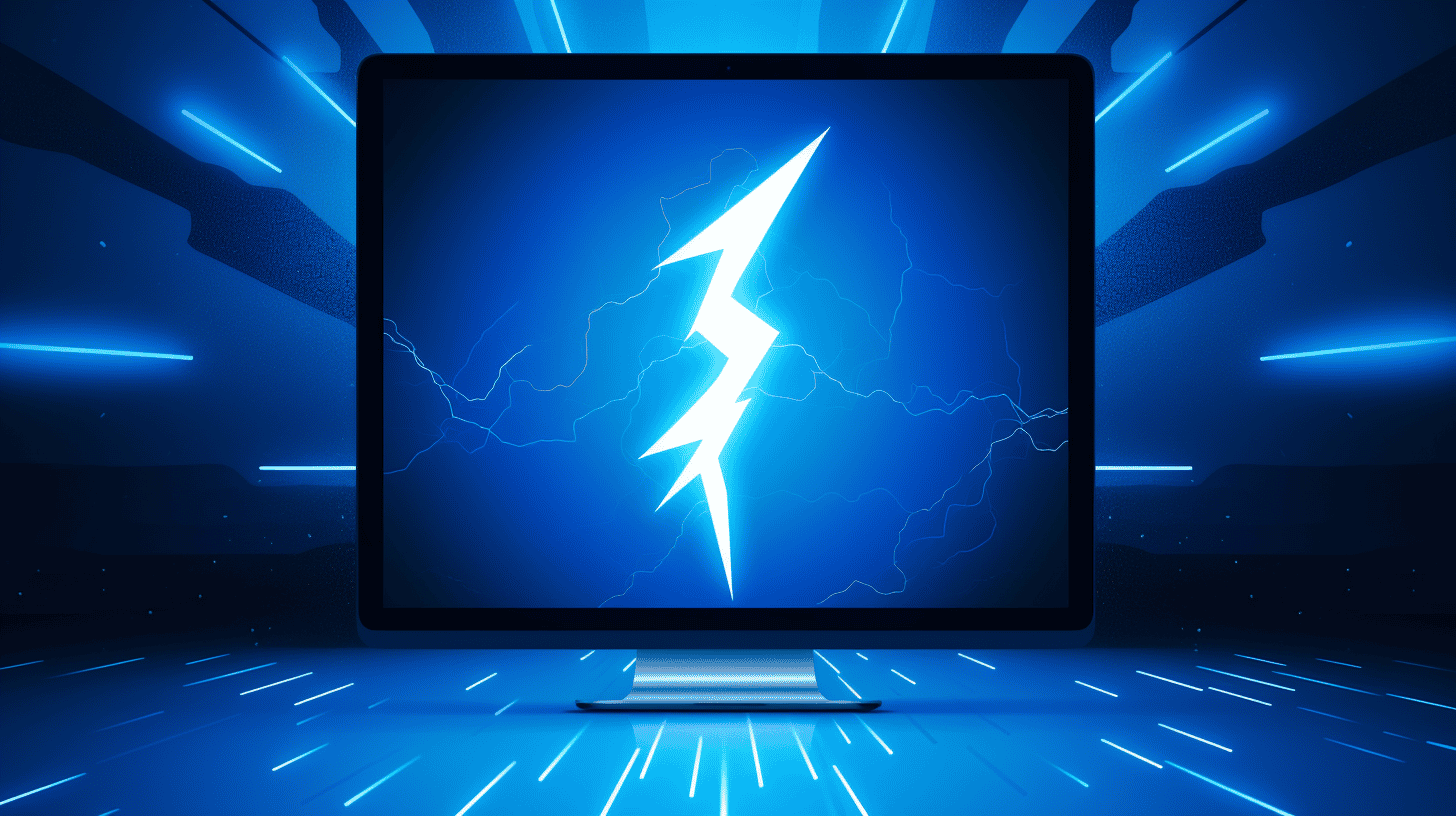在這個快節奏的數位時代,速度已經成為成功的代名詞。無論是爭分奪秒趕上最後期限,還是只是等待網站加載,我們都希望事情能夠立即發生。隨著注意力持續時間越來越短,耐心也越來越少,網站速度緩慢可能會對任何企業的成功造成不利影響。
那麼,網站速度到底有什麼大不了的?為什麼優化 WordPress 網站的速度對於企業來說至關重要?讓我們深入研究網站速度的世界,看看為什麼快速的網站可以在競爭激烈的線上環境中發揮重要作用。
用戶對網站載入時間的期望
想像一下:您點擊一個網站鏈接,熱切地期待探索其內容。然而,隨著時間一分一秒地過去,你發現自己變得越來越不耐煩。幾秒鐘之內,您決定放棄該頁面並查看其他地方。
這種情況並不少見。研究表明 47% 的消費者希望網站載入時間不超過 2 秒, 和 40% 表示放棄網站 如果載入時間超過 3 秒。使用者的期望值不斷飆升,提供快速、無縫的使用者體驗的重要性從未如此迫切。
載入時間對跳出率的影響
載入緩慢的網站不僅會趕走用戶,還會導致高跳出率。跳出率是指未與任何其他頁面互動就離開網站的使用者百分比。此指標可以充分錶明用戶對您的內容的參與度。
研究發現網站載入時間和跳出率之間有強烈的相關性。隨著載入時間的增加,跳出率也會增加。簡而言之,如果您的網站需要很長時間才能加載,訪客很可能會離開而不會進一步瀏覽。這可能會對您網站的效能產生負面影響,並阻礙您將訪客轉化為客戶的機會。
載入時間和轉換率
現在,事情變得有趣了。您的網站載入速度會直接影響您的轉換率。研究表明,頁面載入時間每延遲一秒鐘都可能導致 7% 轉換次數減少。是的,您沒看錯-分分秒秒都很重要!
從使用者的角度思考。如果網站載入時間過長,就會讓人產生不信任和沮喪的感覺。用戶不太可能信任加載緩慢的網站,並且更傾向於點擊離開而不進行購買或採取任何所需的操作。
顯然,網站速度對於用戶體驗、跳出率以及最終的轉換率起著至關重要的作用。企業必須優先優化其 WordPress 網站的速度,以便在競爭激烈的線上環境中保持領先地位。
*請繼續關注下一部分,我們將探討網站的平均載入時間、大小及其對使用者行為的影響。*
網站速度和用戶期望
說到網站效能,速度至關重要。在當今快節奏的數位世界中,用戶對網站載入時間有很高的期望。他們希望能夠隨時獲得訊息,並且希望能夠快速獲得。那麼,網站速度如何影響使用者體驗和整體網站成功呢?讓我們深入探索吧! 💨
用戶對網站載入時間的期望
根據數據顯示,高達 83% 的線上用戶期望網站載入時間在三秒或更短。是的,你沒看錯──三秒鐘! 🕒 如果網站載入時間過長,用戶可能會放棄該網站並轉向競爭對手的網站。在使用者眼中,緩慢的載入時間已經不重要了。
載入時間對跳出率的影響
跳出率衡量的是未與網站互動就離開網站的使用者百分比,它受載入時間的影響很大。隨著頁面載入時間從 1 秒增加到 3 秒,跳出率驚人地增加了 32%。這對企業而言,意味著潛在參與度和轉換率的重大損失。用戶沒有耐心,如果您的網站載入速度不夠快,他們就不會留下來。
載入時間和轉換率
速度不僅影響跳出率,也會直接影響轉換率。載入時間更快(約一秒)的網站的轉換率為 39%。另一方面,載入時間較慢的網站很難將使用者轉換為客戶。
重要的不僅是最初的轉變;即使載入時間有微小的改善也能帶來更高的轉換率。頁面載入時間每提高 1 秒,轉換率就會增加 2%。對於願意投資優化網站速度的企業來說,這是一個巨大的動力。
那麼,您如何確保您的網站滿足用戶期望並讓他們參與其中?一個關鍵因素是 WordPress 優化。透過優化您的 WordPress 網站,您可以顯著提高其速度和效能。這反過來又會帶來更好的使用者體驗和更高的轉換率。
要了解有關 WordPress 優化對網站速度和業務成功的影響的更多信息,您可以查看這篇關於 WordPress 優化的影響。它提供有價值的資訊和提示,幫助您優化 WordPress 網站,以實現最高速度和用戶滿意度。
請記住,在當今的數位環境中,網站速度不僅僅是一種可有可無的東西;這是必須的。因此,優先考慮優化,滿足用戶期望,並觀察您的網站蓬勃發展! ⚡️
網站平均載入時間和大小
在當今快節奏的數位世界中,人們的注意力持續時間比以往任何時候都短,網站的載入速度可以決定使用者的體驗。無論您是在桌上型電腦還是行動裝置上瀏覽,網站的載入時間對於吸引和留住受眾的注意力都起著重要作用。
在桌面和行動裝置上
根據最近的數據,2023 年網站平均載入時間在桌面裝置上為 2.5 秒,在行動裝置上為 8.6 秒。
💡你知道嗎?完全載入網頁的平均時間甚至更長,桌面裝置平均為 10.3 秒,行動裝置則高達 27.3 秒。這些數據表明,不僅初始載入時間很重要,而且整個載入過程都需要最佳化,以獲得流暢的使用者體驗。
全球 100 個頂級網頁
為了真正了解網站載入時間的重要性,讓我們來看看全球前 100 個網頁的一些統計數據。這些頁面是使用者認為高品質、高效網站的基準。
在分析這些表現最佳的網頁時,研究人員發現轉換率最高的頁面是那些在 0 到 2 秒內載入的頁面。這項發現強調了載入時間和轉換率之間的直接關聯——網站載入速度越快,將訪客轉換為客戶的機會就越大。
💡 專業提示:透過優化網站的載入時間,您可以顯著提高轉換率並創造更多業務。
對轉換率的影響
那麼,網頁的大小如何影響其載入時間?平均而言,一個網頁的大小約為 2,486KB。網頁越大,載入所需的時間越長——緩慢的載入過程會阻礙使用者並導致更高的跳出率。
透過採用各種最佳化技術(例如壓縮圖片和縮小程式碼)來減少網頁大小,您可以確保更快的載入時間。這反過來會對您的轉換率和用戶參與度產生積極影響。
💡 請記住:網站載入時間每分每秒都至關重要。您的網站載入速度越快,使用者就越有可能保持參與並採取所需的操作。
總而言之,優化網站的載入時間和大小對於提供無縫的用戶體驗、提高轉換率和推動業務成長至關重要。透過了解桌面和行動裝置上的平均載入時間、檢查表現最佳的網頁並了解對轉換率的影響,您可以採取必要的步驟來提高網站的效能。因此,請務必優先考慮加載時間和尺寸優化,以吸引並滿足您的觀眾。
提高 WordPress 網站速度的技巧
WordPress 是一個用於建立和管理網站的強大平台。然而,隨著您的網站不斷發展並變得越來越複雜,您可能會注意到其效能下降。緩慢的載入時間可能會讓訪客感到沮喪,甚至損害您的搜尋引擎排名。這就是為什麼優化 WordPress 網站速度至關重要。
使用快取和 CDN 服務
快取是一種儲存網站頁面靜態版本的技術。當訪客請求頁面時,伺服器會提供快取版本,從而減少伺服器負載並縮短頁面載入時間。
實施內容傳遞網路 (CDN) 是提高網站速度的另一種有效方法。 CDN 將您網站的靜態檔案(例如圖片和 JavaScript)分發到位於世界各地的伺服器。這樣,訪客可以從距離他們最近的伺服器存取您的內容,從而減少延遲並提高速度。
優化網站檔案和圖形
較大的文件可能會嚴重減慢您的網站速度。透過優化您的網站檔案和壓縮圖形,您可以減少載入時間並提高效能。以下是一些提示:
- 使用 Photoshop 或線上影像壓縮服務等工具壓縮影像。
- 透過刪除不必要的字元、空格和註解來縮小 CSS 和 JavaScript 檔案。
- 將多個 CSS 和 JavaScript 檔案合併為一個,以減少 HTTP 請求的數量。
利用輕量級主題
您為 WordPress 網站選擇的主題會對其速度產生重大影響。選擇設計時充分考慮性能的輕量級主題。這些主題通常具有簡約的設計,並針對快速加載進行了最佳化。
限制 HTTP 請求
每次訪客加載您的網站時,他們的瀏覽器都會針對每個需要加載的文件發送請求。限制 HTTP 請求的數量可以顯著提高您的網站速度。以下是一些減少 HTTP 請求的技術:
- 合併多個 CSS 和 JavaScript 檔案為一個。
- 使用 CSS 精靈將多個圖片合併為一個檔案。
- 刪除產生 HTTP 請求的不必要的外掛程式和腳本。
禁用不必要的插件
外掛程式可以為您的 WordPress 網站添加有價值的功能,但使用過多的外掛程式也會降低其速度。一些外掛程式可能會產生額外的 CSS 或 JavaScript 文件,或執行影響效能的資料庫查詢。定期檢查您正在使用的插件並停用任何不必要的或耗費資源的插件。
優化資料庫
臃腫的資料庫會降低您的 WordPress 網站的速度。定期優化您的資料庫以刪除不必要的數據,例如貼文修訂、垃圾評論和已刪除的項目。您可以使用 WP-Optimize 或 WP-Sweep 等外掛程式來簡化資料庫並提高效能。
在經常查詢的資料庫表中新增索引也可以提高速度,因為它允許伺服器更有效地尋找和檢索資料。
透過實施這些經過驗證的技術,立即提高您的 WordPress 網站速度。優化您的網站不僅可以增強用戶體驗,還可以提高您的搜尋引擎排名。採取必要的措施確保您的網站發揮最佳效能並讓訪客再次造訪。
請記住,快速的網站才是快樂的網站! 🚀
更快網站的好處
在當今快節奏的數位世界中,速度是關鍵。無論我們是瀏覽互聯網、在線購物還是訪問信息,我們都希望網站能夠快速高效地加載。加載緩慢的網站會讓人感到沮喪,導致用戶離開並尋找其他網站。但是您是否知道,更快的網站不僅僅提供更好的用戶體驗?它會對您企業的成功產生重大影響。讓我們來探討一下擁有更快網站的好處:
更高的轉換率
擁有更快的網站速度的最顯著好處之一就是轉換率的潛在提高。研究表明,當網站加載時間較長時,跳出率會增加,用戶更有可能放棄訪問而不完成所需的操作。這可以包括購買、註冊新聞通訊或填寫聯絡表單。另一方面,當網站快速加載時,它會創造無縫的用戶體驗,使訪客更容易瀏覽和採取行動。這反過來又可以提高轉換率,並最終為您的企業帶來更多的銷售或轉換。因此,透過投資提高網站速度,您可以顯著影響您的底線。
提高用戶滿意度
想像一下造訪一個需要很長時間才能載入的網站。人們的沮喪和不耐煩顯而易見。您可能會想放棄並前往其他提供類似產品或服務的網站。當您的網站運作緩慢時,就會發生這種情況。用戶不太可能獲得積極的體驗,這可能會損害您的品牌聲譽和客戶忠誠度。另一方面,更快的網站可以為用戶創造流暢、無縫的體驗,使他們能夠快速、輕鬆地找到所需內容。這可以提高用戶滿意度並改善他們對您業務的整體看法。透過優先考慮網站速度,您可以向客戶表明您珍惜他們的時間並希望為他們提供最佳的體驗。
提高 SEO 排名
網站速度是搜尋引擎優化(SEO)的關鍵因素。像 Google 這樣的搜尋引擎在決定網站的搜尋排名時會考慮網站的載入速度。速度更快的網站更有可能在搜尋結果中排名更高,從而提高知名度並吸引更多的自然流量。此外,頁面速度現在也是行動裝置上的排名因素之一。由於大多數網路使用者都使用手機瀏覽,因此擁有一個快速的行動網站對於 SEO 成功至關重要。透過優化網站速度,您可以提高在搜尋結果中排名更高的機會,吸引更多的自然流量,並最終提高您的線上知名度。
要了解有關 SEO 如何提高 WordPress 網站的在線可見性的更多信息,請查看我們的綜合指南 WordPress 網站中的 SEO.
總之,投資一個更快的網站能為您的業務帶來許多好處。從更高的轉換率到更高的用戶滿意度和更好的 SEO 排名,網站速度的影響怎麼強調都不為過。透過優先考慮速度優化,您可以創建無縫的用戶體驗,提高品牌聲譽並提升線上知名度。因此,不要忽視快速網站的重要性——它確實可以對您的業務成功產生影響。
結論
總之,網站速度對於任何企業的成功都起著至關重要的作用。用戶對網站載入時間有很高的期望,而速度緩慢的網站會導致更高的跳出率和更低的轉換率。
幸運的是,有各種技術和優化策略可以幫助提高您的 WordPress 網站的速度。透過利用快取和 CDN 服務、優化網站檔案和圖形以及採用輕量級主題,您可以顯著提高網站的效能。此外,限制不必要的外掛程式、最佳化資料庫和最小化 HTTP 請求可以進一步加快載入時間。
更快的網站帶來許多好處,包括更高的轉換率、更高的用戶滿意度和更好的 SEO 排名。如果您的網站載入速度很快,用戶就更有可能停留並與您的網站互動,從而增加轉換和重複造訪的機會。此外,搜尋引擎優先考慮快速加載的網站,這可以對您的自然搜尋排名產生積極影響。
請記住,Managed-WP 可協助簡化您的 WordPress 託管並確保最佳網站速度。透過我們的雲端託管平台和專家的問題解決方案,您可以專注於為您的受眾提供卓越的數位體驗。訪問 託管WP 探索我們的服務並將您網站的效能提升到新的水平。
常見問題解答
- 優化 WordPress 網站有哪些技巧?
優化 WordPress 網站的一些技巧包括:1. 使用輕量級主題,2. 安裝快取插件,3. 優化網頁圖片,4. 縮小 CSS 和 JavaScript 文件,5. 啟用 GZIP 壓縮。
- 為什麼網站優化對企業很重要?
網站優化對企業很重要,因為它有助於提高網站速度、使用者體驗和搜尋引擎排名。快速的網站可以吸引更多的訪客,降低跳出率,最終帶來更高的轉換率和客戶滿意度。
- 是否有必要針對網頁進行圖像優化?
是的,優化網頁圖像是必要的,因為大圖像檔案會顯著降低您的網站速度。您可以使用 Photoshop、ImageOptim 等工具或 WordPress 的 Smush 等外掛程式來壓縮圖片而不會損失品質。
- 什麼是 GZIP 壓縮以及它有什麼好處?
GZIP 壓縮是一種減少網站檔案大小以加快其載入速度的方法。它顯著減少了頻寬使用並提高了頁面速度。在您的 WordPress 網站上啟用 GZIP 壓縮可以縮短載入時間並改善使用者體驗。
- 我可以在不具備技術知識的情況下優化我的 WordPress 網站嗎?
是的,您無需技術知識即可優化您的 WordPress 網站。有用戶友好的優化外掛程式可用,例如 WP Rocket 和 W3 Total Cache,它們可以幫助您進行快取、縮小和其他優化技術,而無需編碼技能。



















